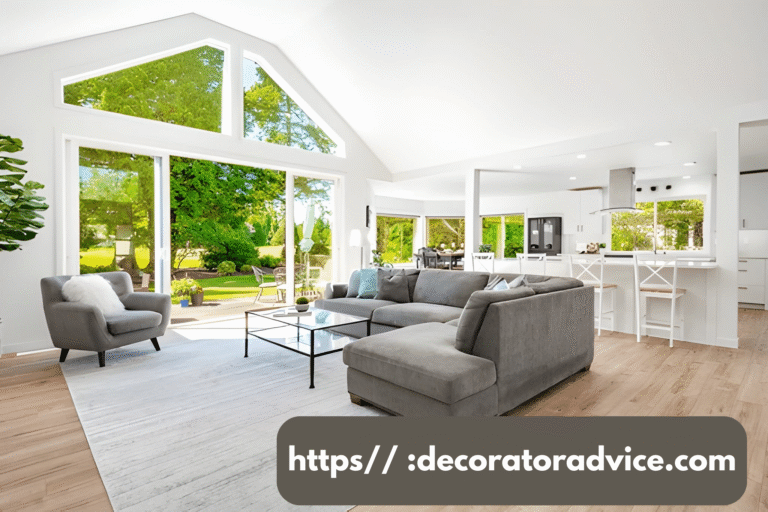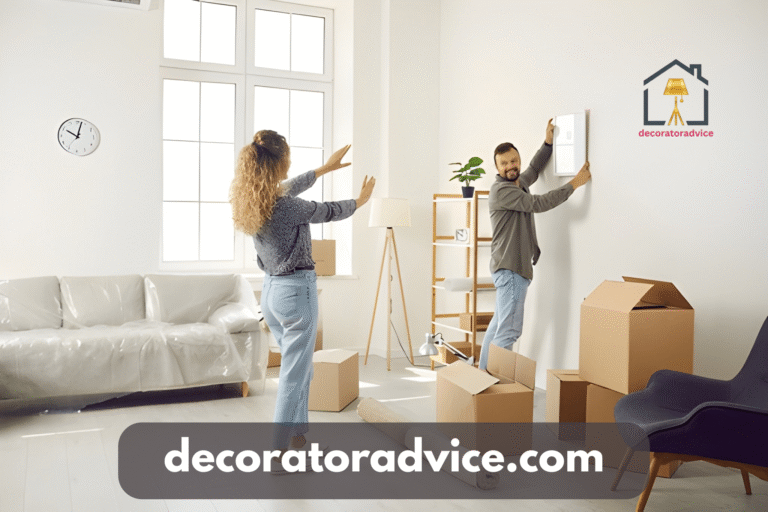Simple Decorating Tips You Can Find on https//decoratoradvice.com
It doesn’t have to be too much to do to decorate your house. You can use simple, clever ideas to transform your space with the help of https//decoratoradvice.com. These aren’t fads. These are sensible actions that seem appropriate for everyday life. No matter how big or small your home is, or whether you only want to renovate one room, these tips can help you make your spaces both visually beautiful and useful.
This article will cover foundational design principles, room-by-room tweaks, color and lighting, budget-friendly upgrades, and ways to add your own personality. We will show examples, suggest ways to mix texture and pattern, and offer ideas to maximize space. By the end you’ll have a list of decorating tips drawn from what decoratoradvice com and similar trusted sources show works in practice. You’ll feel ready to make choices with confidence, without spending too much time or money.
Why Start with https//decoratoradvice.com

When looking for decorating tips you can trust, https//decoratoradvice.com stands out because it combines style inspiration with practicality. The site gives clear advice on layout, color selection, material choices, and even small DIY changes that have a big impact. It balances what looks good with what works in daily life. If you start with those basics, all further decorating feels easier.
Decorating Principles: The Foundation
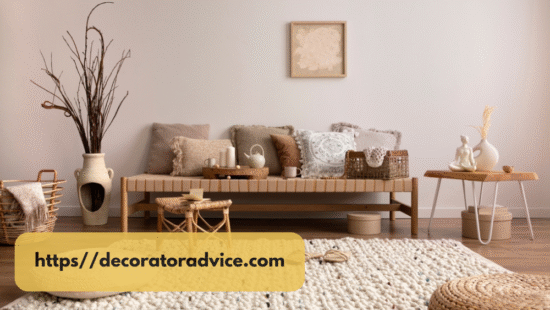
Every good decorating decision rests on certain core principles. These come up repeatedly on https//decoratoradvice.com. You won’t get stuck picking a rug or paint if you know what you want first.
Know What You Like
Start by examining the materials, colors, and styles that appeal to you. Use magazines, Pinterest, or photos. Notice colors or themes you return to. That gives your decorating a base. For example, if you lean toward warm tones and wood textures, that should guide your furniture and paint decisions rather than trying to follow a fad you don’t truly like. You can also explore ideas on about decoratoradvice .com to see how similar styles work in real homes before making choices.
Function First
Decorating isn’t just about how things look. If your living room doesn’t allow people to sit comfortably, or paths are blocked, you’ll regret design choices. Let decoratoradvice.com’s examples guide you: leave enough walking space, balance furniture so the room feels open, and pick pieces that serve more than looks. For instance, ottomans with storage or couches with durable fabric.
Light and Color
Light changes everything. Natural light shows real colors. Artificial lighting can warm or cool tones. When using decoratoradvice, test paint swatches in both daylight and lamplight. Lighter hues can help make tiny areas feel larger. Accent-colored walls, throw pillows, and curtains can bring contrast without overwhelming.
Texture and Pattern
Plain walls and plain furniture won’t hurt, but they can feel flat. Textures—woven rugs, linen curtains, wood grain, and metal accents—add depth. Patterns, when used carefully (scale, repetition, color harmony), can energize a space. As many examples from https//decoratoradvice.com show, combining 1 bolder pattern with 2 simpler ones works well.
Room-by-Room Ideas You Can Apply Now
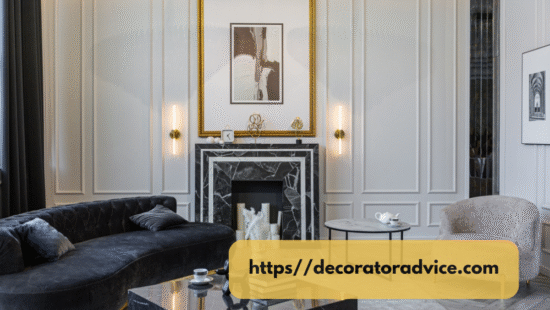
These are practical, simple tips you can use in different rooms of your home.
Living Room
Bring in layered lighting: overhead light, floor lamp, and table lamp. Each adds a mood.
Use modular furniture. A sectional you can rearrange helps when you need space for guests.
Anchor the space with a rug. Even a medium-sized rug under the front legs of sofas gives a defined look. Use throw blankets or cushions in a color that complements your accent wall or art.
Bedroom
Choose calming tones for walls and bedding. Soft greens, blues, and neutrals help with rest.
Pick nightstands that reflect your style and give storage. Even a small shelf can work.
If space allows, add something personal—a framed picture or a work of art that you adore. That connection matters more than perfection.
Kitchen and Dining
Beautiful cookbooks or dishes are displayed on open shelves or in glass-front cabinets. Display work should be tidy.
Change hardware: knob or pull changes on cabinets give a fresh feel without major cost.
Good lighting over the dining table matters. Focus is drawn by a pendant or chandelier.
Bathroom
Keep items stored or behind closed doors. Minimal clutter feels cleaner.
Add mirrors: they increase light and visually broaden space.
Use washable or quick-dry mats and towels. Function counts here.
Small Spaces: Maximizing What You Have
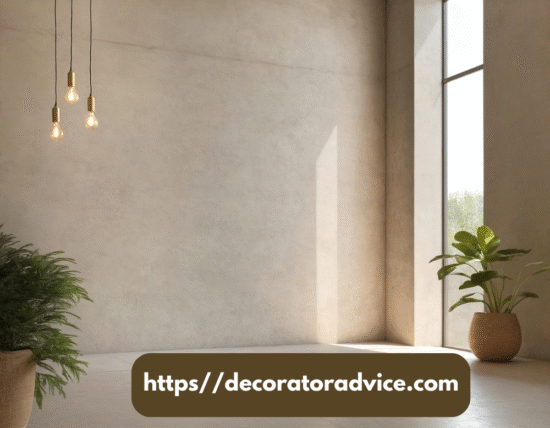
Not everyone has large rooms. Small spaces need thoughtful decorating.
- Choose furniture with multiple functions. Things like beds with drawers underneath, ottomans that store, or fold-away desks.
- Use vertical space. Tall shelving, wall hooks, and floating shelves draw the eye up, freeing the floor.
- Mirrors help. Opposite windows or light sources, they reflect light and make space seem bigger.
- Stick with lighter color schemes for walls and furniture. Dark tones make tight spaces feel heavier.
Budget-Friendly Upgrades
You don’t need to spend big to change how a room feels.
- Repaint one wall instead of all walls. Accent walls can add character.
- Swap out light fixtures or lamp shades. Even just changing bulbs to warmer ones can shift mood.
- Use textiles: pillows, throws, and curtains can shift color & texture cheaply.
- Repurpose what you have. For example, repaint old furniture or use thrifted pieces as focal items.
Adding Personality and Style
Spaces feel like home when they reflect who you are.
- Display items you love. Books, photos, and travel souvenirs. Let things have meaning.
- Mix old and new. One vintage piece plus modern items keeps the space grounded.
- Choose art that moves you even if it doesn’t match everything else. That tension often looks more authentic than overcoordinated.
- Plants help; even easy ones like pothos and snake plants bring life.
Lighting: The Unsung Hero
Lighting makes or breaks a room more than many realize.
- Layer lighting: overhead, ambient, and task lights. Reading in bed needs a lamp by the bed, etc.
- Use dimmers when possible. Mood adjusts based on use: working, relaxing, or entertaining.
- Natural light: keep windows clean. Use sheer curtains to let light in while keeping privacy.
- Choose bulbs with good color rendering. Warm light (around 2700-3000 K) often feels more inviting in living spaces.
Color Choices: How to Pick and Use
Too many paint options can overwhelm. Here are ways to make color choices simpler.
- Begin with sample swatches. Paint small patches and examine them throughout the day.
- Limit the main color palette to two neutrals and one accent. That gives cohesion and flexibility.
- Use contrast: dark wood, light walls, and bright accents. Contrast adds interest.
- Consider ceiling and trim too. Sometimes painting a ceiling a softer hue or trimming it with a crisp white upgrades the whole room.
Final Tips: Pulling It All Together with https//decoratoradvice.com Wisdom
When you apply these tips, you’ll notice that decorating becomes easier, not more stressful. Always start small: one room, one corner. Use what resonates with you from https//decoratoradvice.com’s advice and ideas shared by decoratoradvice .com partners. Be patient: paint, fabrics, and lighting—those evolve. Track what you like and what feels washable, usable, and durable. Your house gradually transforms from a fashionable area to one that genuinely supports your way of life.
The platform shares simple decoration tips decoradhouse from decoratoradvice to help you create a cozy and balanced living space. You can also find decoradhouse renovation tips from decoratoradvice that guide you through every stage of improving your home. If you love tech-inspired living,
Closing Insights
Decorating need not feel like a chore or a splurge. Smart design principles, choices that support your daily life, and choices that reflect your taste are what count. With simple, latest decoratoradvice .com tips you find on https//decoratoradvice.com—like mixing texture, using color with care, and arranging furniture around function—you can create spaces that make sense and feel good.



